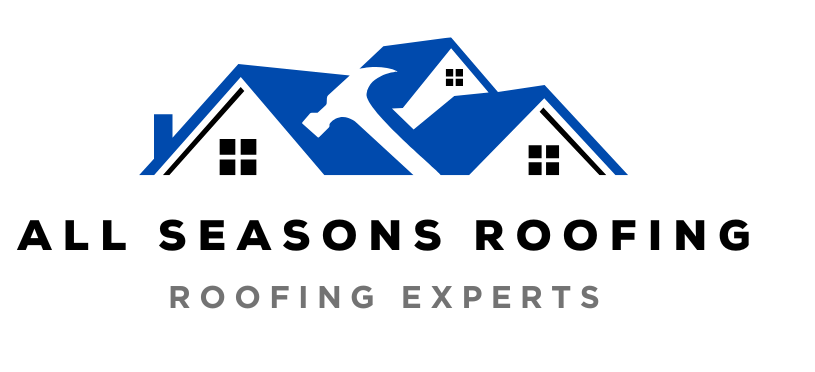Attic ventilation keeps your roof cooler and drier by moving hot, moist air out and drawing fresh air in. This helps your shingles last longer, prevents mold and wood rot, stabilizes indoor comfort, and can lower energy bills.
Our Hemet Roofing experts recommend a balanced system—roughly half intake at the eaves and half exhaust at the ridge—verified with proper airflow calculations and baffles to keep soffits clear. All Seasons Roofing inspects, sizes, and upgrades attic ventilation to protect your home in every season.
What Attic Ventilation Actually Does
Think of your attic as the roof’s “pressure-relief and moisture-control” chamber. A good system has two parts:
- Intake (usually at soffits/eaves): Brings in cooler outside air.
- Exhaust (often at ridge or roof vents): Lets hot, humid air escape.
When these are balanced, you get a continuous, quiet airflow that:
- Purges heat that builds under your roof deck
- Removes moisture from showers, cooking, and daily living that migrates up into the attic
- Reduces temperature extremes that stress roofing materials
Our Hemet Roofing experts recommend verifying that attic insulation doesn’t block soffit vents; installing baffles (rafter vents) maintains a clear air channel from intake to exhaust.
Why Ventilation Matters for Roof Longevity
- Reduces thermal stress on shingles: Extreme attic heat cooks asphalt oils out of shingles, causing curling, cracking, and granule loss. Proper airflow lowers deck temperatures, extending shingle life.
- Prevents deck rot and mold: Warm air naturally holds moisture. When it hits cooler roof decking at night, condensation can form. Over time, that leads to mold, rusted nails, and soft, spongy sheathing. Our Hemet Roofing experts recommend ventilation plus correct bath/kitchen fan terminations to the exterior—not into the attic.
- Protects manufacturer warranties: Many shingle manufacturers require code-compliant ventilation. If a roof overheats or traps moisture, warranty claims can be denied. All Seasons Roofing documents ventilation during inspections to keep your coverage intact.
Comfort and Energy Savings You Can Feel
- Lower attic heat = less AC strain: In Hemet’s hot seasons, attic temperatures can exceed 130°F in under-ventilated homes. Reducing attic heat eases the load on HVAC systems and may cut cooling costs.
- More stable indoor temps: Balanced airflow helps minimize hot second floors and uneven room temperatures.
- Healthier indoor air: Ventilation helps purge moisture and VOCs that can migrate into living areas through ceiling penetrations.
Our Hemet Roofing experts recommend pairing proper ventilation with adequate attic insulation and sealed ceiling penetrations for the biggest comfort gains.
Signs Your Attic Ventilation Needs Attention
- High summer AC bills and hot upstairs rooms
- Shingle aging faster than expected (curling edges, bald spots)
- Musty odors, dark staining on roof sheathing, or visible mold
- Rusty nails or damp insulation in the attic
- Ice dams in colder climates; locally you may see nighttime condensation and morning moisture on nails in cooler months
- Peeling exterior paint near soffits or moisture stains on fascia
If you notice any of the above, our Hemet Roofing experts recommend a professional attic and roof assessment before the next heat wave or storm cycle.
How Much Ventilation Do I Need?
Building codes and manufacturers commonly use the Net Free Area (NFA) rule:
- Standard rule: 1 square foot of net free ventilation per 300 square feet of attic floor area—split evenly between intake and exhaust.
- If no balanced system or no vapor retarder: Use 1:150 as a safer target.
Example: If your attic is 1,500 sq. ft.:
- At 1:300, you need 5 sq. ft. of NFA total (720 sq. in.), with ~360 sq. in. intake and ~360 sq. in. exhaust.
- At 1:150, double it to 10 sq. ft. of NFA (1,440 sq. in.) total.
Important details:
- NFA is the vent’s effective open area after screens and louvers—not its physical size.
- Balance matters. Too much exhaust without intake can suck conditioned air from your home; too much intake without exhaust can trap heat and moisture.
- Do not mix multiple exhaust types high on the roof (e.g., ridge plus several can vents) without a plan; one exhaust can pull air from another instead of from soffits.
Our Hemet Roofing experts recommend sizing based on your attic’s actual measurements and existing vent hardware, then verifying with on-site airflow checks.
Vent Types: Pros, Cons, and Best Uses
- Ridge vents: Continuous exhaust at the highest point. Excellent when paired with clear soffit intake. Low-profile and effective.
- Soffit vents: Primary intake. Options include continuous strip vents or spaced panels. Must remain unobstructed with insulation baffles.
- Gable vents: Can help in older homes but may short-circuit ridge/soffit systems if mixed improperly.
- Box (static) vents: Useful on complex roofs without long ridges; require careful layout and intake balance.
- Powered fans: Move lots of air, but can depressurize the attic and pull conditioned air from the home if intake is inadequate. They also use electricity. Our Hemet Roofing experts recommend passive, balanced systems first; consider solar or smart fans only when design constraints demand it.
- Tile roofs: Use dedicated high/low tile vents and ensure bird-stop and eave entries don’t block intake. Details matter under tile.
Hemet Climate Considerations
- Intense sun and long cooling seasons: UV and heat accelerate shingle aging and attic temperature spikes. Ventilation is a frontline defense.
- Santa Ana winds: Can drive dust and debris into vents. Our Hemet Roofing experts recommend seasonal checks to keep soffits and ridge vents clear.
- Occasional heavy rains: Vent products must be properly flashed and rated to prevent wind-driven rain intrusion. We install code-compliant, storm-tested components.
Common Ventilation Mistakes to Avoid
- Blocked soffits from blown-in insulation without baffles
- Mixing exhaust types at the ridge and high slopes, causing short-circuiting
- Under-sized intake relative to exhaust—your system can’t exhale what it can’t inhale
- Bath or dryer fans vented into the attic (should go outdoors)
- Painting over soffit vents, reducing NFA
- Skipping attic air sealing, which wastes energy and can draw indoor moisture upward
Our Hemet Roofing experts recommend a whole-attic approach: air seal, insulate to target R-values, then balance intake/exhaust.
DIY vs. Professional: What’s Safe to Tackle?
- Homeowners can:
- Check for blocked soffits and install simple foam baffles at the eaves
- Clean visible vent screens and gutters
- Look for moisture staining and rusted nails in the attic with proper safety
- Leave to the pros:
- Cutting new ridge, box, or tile vents and flashing them correctly
- Calculating NFA and balancing multiple roof planes
- Integrating ventilation with reroofs, solar, skylights, and radiant barriers
Improper vent placement can cause leaks or reduce system performance. Our Hemet Roofing experts recommend professional design and installation for lasting results.
How All Seasons Roofing Can Help
All Seasons Roofing offers:
- Ventilation audits: Measure attic size, calculate required NFA, and inspect current intake/exhaust, insulation, and baffles.
- Photo-documented reports: Clear findings with prioritized fixes.
- Balanced system installations: Ridge and soffit vent upgrades, tile vent solutions, and code-compliant flashing.
- Warranty alignment: We match manufacturer specifications to protect your roof warranty and maximize performance.
Whether you’re planning a reroof or improving an existing system, our Hemet Roofing experts recommend addressing ventilation now—before peak heat returns.
Final Takeaway
Attic ventilation is not optional “extra hardware”—it’s a core roofing system that protects shingles, decking, and your indoor comfort. By keeping your attic cooler and drier, you extend roof life, lower energy use, and maintain warranty compliance. If you’ve noticed hot rooms, musty odors, or aging shingles, contact All Seasons Roofing for a ventilation audit.
Our Hemet Roofing experts recommend a balanced, documented solution tailored to Hemet’s climate—so your roof performs in every season.

